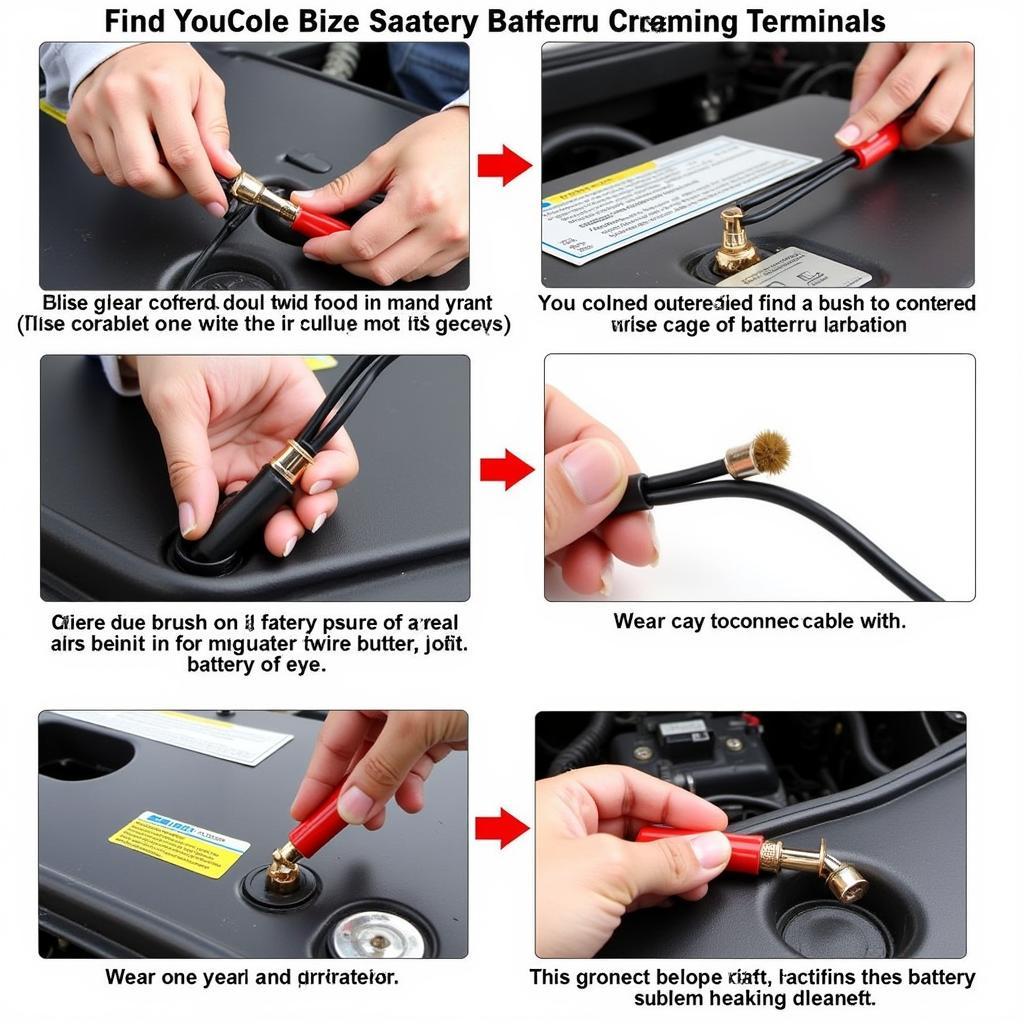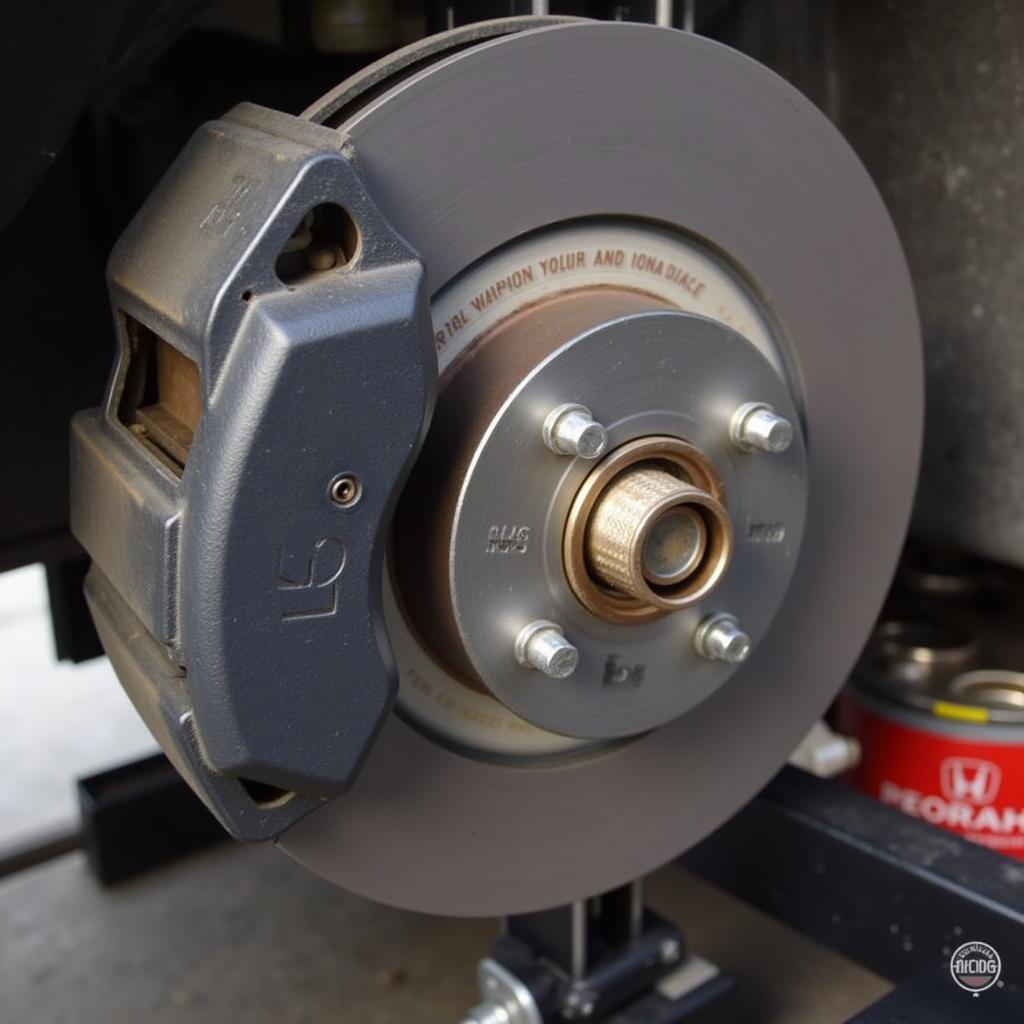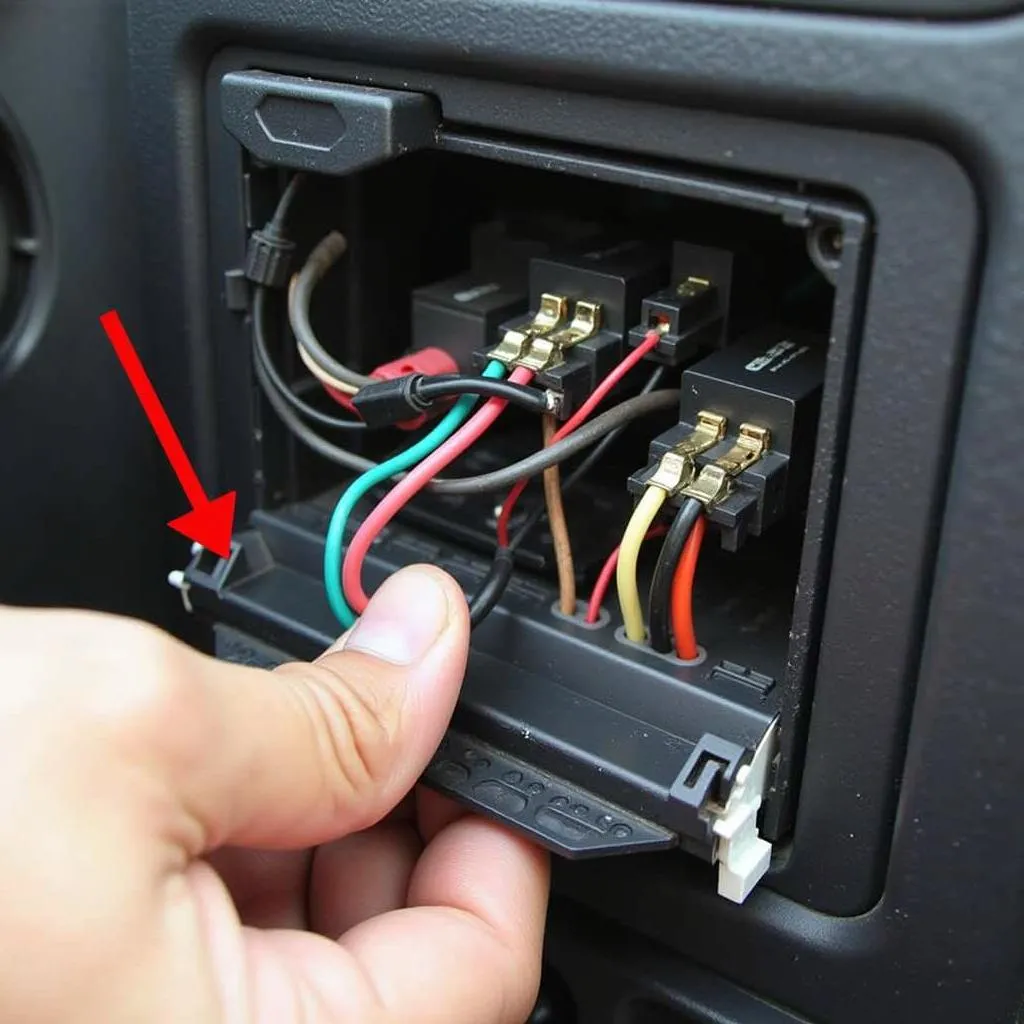A dead battery is the most common reason for a car not starting. This article will guide you through diagnosing, troubleshooting, and fixing a dead car battery, including remote software solutions when applicable. We’ll also cover preventative measures to avoid future battery issues.
One of the first things to check when your car won’t start is the battery. If your car shows signs of a dead battery – dim headlights, slow cranking, or no electrical power – you’ll need to troubleshoot the issue. This might involve testing the battery voltage, inspecting the terminals for corrosion, or trying to jump-start the car. Sometimes, the issue isn’t a dead battery at all, but a different starting problem. For those situations, check out our article on a car not starting battery not dead.
Diagnosing a Dead Car Battery
Several signs indicate a dead battery. Besides the car not starting, look for flickering interior lights, a clicking sound when you turn the key, or a slow engine crank. A multimeter can accurately confirm a dead battery by measuring its voltage. A reading below 12.6 volts typically indicates a problem.
Using a Multimeter Effectively
To get an accurate reading, make sure the multimeter is set to DC voltage. Connect the red probe to the positive terminal and the black probe to the negative terminal. If the battery is completely dead, a battery charger that will charge a completely dead battery is needed. Learn more about this in our dedicated guide: battery charger that will charge a completely dead battery.
Jump Starting Your Car
If your battery is dead, jump-starting is a common solution. Carefully connect the jumper cables, ensuring proper connection to the positive and negative terminals of both batteries. Start the donor car and let it run for a few minutes. Then, try starting your car. If your car won’t start even with a jump, there could be additional problems, such as a faulty starter. If your battery isn’t dead but your car isn’t starting, see our guide on a battery not dead but car not starting.
Beyond Jump Starting: Remote Diagnostics and Software Solutions
Sometimes, a car not starting despite a good battery can indicate underlying electrical or software issues. In modern vehicles, remote diagnostics and software updates can resolve these problems. These tools can identify faulty sensors, software glitches, or programming errors that prevent the car from starting. Contact a qualified technician specializing in remote automotive software solutions for assistance. For instance, a brake system warning cx5 car won’t start situation can sometimes be resolved remotely.
“Remote diagnostics are increasingly crucial for resolving complex car issues, even when the car won’t start,” explains Dr. Amelia Carter, an automotive electrical engineer. “These technologies allow us to pinpoint problems without physical access to the vehicle, saving time and often avoiding costly replacements.”
Preventing Future Battery Problems
Regular maintenance can prevent future battery issues. Keep the battery terminals clean and free of corrosion. Ensure the battery is properly secured to avoid vibrations. Limit short trips, as they don’t allow enough time for the alternator to recharge the battery fully. During cold weather, consider using a battery blanket to prevent freezing.
 Maintaining car battery and cleaning terminals
Maintaining car battery and cleaning terminals
“Simple maintenance like cleaning battery terminals can significantly extend battery life and prevent unexpected starting issues,” advises Mr. David Miller, a certified automotive technician with over 20 years of experience. “It’s a quick and easy task that every car owner should know how to do.”
Conclusion
A “car not starting battery dead” scenario is a common issue that many drivers face. However, by understanding the causes, diagnosis, and solutions, you can effectively address the problem and get back on the road. Remember to practice preventative maintenance to avoid future battery troubles. If your issue persists, contact a qualified technician for further assistance.
“Remember to always prioritize safety when working with car batteries and electrical systems,” reminds Dr. Carter. “If you’re unsure about any step, it’s always best to consult a professional.”
FAQ
-
How long does a car battery last? Typically, a car battery lasts between three to five years.
-
Can I jump-start my car with any car? No, ensure the donor car has a compatible voltage system.
-
What causes a car battery to drain quickly? Several factors contribute to battery drain, including extreme temperatures, parasitic drains from electrical accessories, and old age.
-
How can I tell if my alternator is bad? Dim headlights, flickering interior lights, and a dead battery can indicate a faulty alternator.
-
Is it safe to drive with a bad alternator? It’s not recommended to drive with a bad alternator, as it can lead to a complete electrical system failure.
-
Can a dead battery be recharged? Yes, a dead battery can often be recharged using a battery charger. However, if the battery is very old or has been deeply discharged multiple times, it may need to be replaced.
-
How can I test my car starter? You can test your starter by having a helper turn the key while you listen for a clicking sound or tap on the starter with a wrench. If there’s no clicking or the engine doesn’t turn over, the starter may be faulty. While a car not starting but battery not dead may point to the starter, it’s important to rule out other potential causes.



